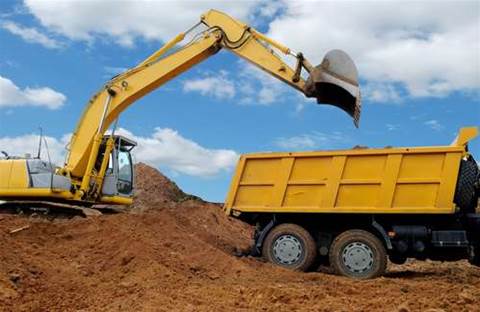Metro Power Company has shunned co-location of its server kit in third-party data centres in favour of a fully self-contained "micro data centre" product developed in Western Australia.
The company is one of the first customers for Zellabox, which is now distributed by IT services giant CSC.
The Zellabox acts like a portable server room. It includes rack space, environmental control systems, air conditioning, uninterruptible power supplies, and even a fire detection and suppression system within the enclosure.
Metro Power Company is using a Zellabox to house an energy management system that it is developing and piloting with BHP Billiton's Iron Ore division that promises to reduce the mineral giant's energy footprint.
The E2M system is purportedly able to ‘suggest' changes in production equipment use and maintenance schedules and adjust electricity buying patterns to use more power from sustainable sources, conserve energy, increase efficiency and save money.
How E2M works
The E2M system has two fibre connections - one directly into BHP Iron Ore's IT systems and a second that goes out to the internet.
E2M interfaces with a relational database attached to BHP's automation and control systems.
Information - from how many tons of ore are moving on a conveyor at any point in time to the amount of energy being used - is drawn out of the database and into E2M.
It is then combined with asset management, maintenance and production planning feeds and "a myriad of weather forecasting feeds", and fed through a combination of statistical analysis and genetic algorithms.
The result, according to Metro Power Company's managing director Timothy Edwards, is that - within parameters - the E2M system is able to "learn" the behaviour of the BHP plant in real-time and suggests how the company can alter plant usage or electricity buying to reduce its energy costs.
"E2M can suggest to us to push and pull what time maintenance activity might occur or to push and pull production activity by 10 percent," Edwards said.
"It might only be able to suggest that at two days notice.
"[The system] can analyse consumption data and market trends [in electricity pricing] and suggest what we can do to meet [BHP's] key priorities - to keep electricity on and at a lower cost."
A key benefit is that iron ore production cycles could be increased on days where sustainable energy is going to be cheaper than coal-fired power - for example, days when it is forecast to be windy.
Data centre search
Edwards told CRN's sister publication iTnews that Metro Power Company had chosen to host E2M onsite in a Zellabox rather than offsite at a third-party data centre due to security and equipment access concerns.
He said the company had scoped data centres around Perth to host E2M but "we struggled to find everything we needed on the market, not just from a cybersecurity and access perspective, but also in terms of space at the right price."
"We'd be no sooner settling on our requirements for one data centre that we'd be told the space is tentatively booked or used," he said.
The cybersecurity concerns were shared by BHP and Metro Power Company. They stem partially from the way E2M works, transferring sensitive production data between the sites.
Access to the components of the E2M system was also important because the system is still under development.
Being able to go in and make configuration changes when the servers are onsite is less onerous than sending people to and from the Metro Power Company offices and a third-party data centre, according to Edwards.
"When you host in a large data centre, you're relying on so many components between you and them to make sure you get the data," he said.
"If something goes wrong and you have to go in and physically plug into the console, you have to get someone there and rely on the access requirements to get into the centre.
"And if it's a component failure, you then have to reverse out of there, get the [replacement] component and come back."
The portability of Zellabox was also attractive. "We're in a pilot scenario now," Edwards said.
"In another six months, we'll probably move to a purpose-built establishment. We'll just pick up the Zellabox and take it with us.
"We'll just schedule some downtime, unplug and replug it in and away we go."
Edwards said he could see the benefits of the Zellabox system for remote sites, project management offices and other usage scenarios, particularly when the national broadband network is complete.
"In a world where there's going to be lots of fibre floating around... I think more people are going to turn to micro data centres, because there's less risk," he said.








_(11).jpg&h=142&w=230&c=1&s=1)



.jpg&w=100&c=1&s=0)
_(8).jpg&w=100&c=1&s=0)









